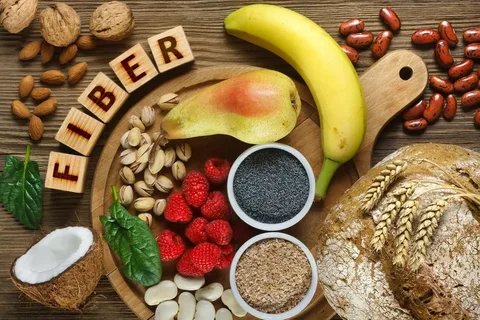
The global dietary fiber market is experiencing substantial expansion, driven by increasing health consciousness and the rising prevalence of chronic diseases. In 2024, The global dietary fiber market size was valued at USD 51.47 billion in 2022 and is projected to reach USD 93.04 billion by 2031, with a CAGR of 6.8 % during the forecast period 2023–2031.
Market Overview
Dietary fibers, essential components found in plant-based foods such as fruits, vegetables, grains, and legumes, play a crucial role in maintaining digestive health, regulating blood sugar levels, and reducing the risk of heart disease. The increasing awareness of these health benefits has led to a surge in demand across various industries, including food and beverages, pharmaceuticals, and animal feed.
Sample Copy of Research Report : https://straitsresearch.com/report/dietary-fibers-market/request-sample
Market Dynamics
A growing global emphasis on health and wellness has led consumers to seek out high-fiber foods and supplements, aiming to improve digestion and prevent chronic diseases. The rise in popularity of functional foods, which offer additional health benefits beyond basic nutrition, has significantly contributed to the increased consumption of dietary fibers. Stringent regulations and varying definitions of dietary fibers across regions can pose challenges for manufacturers in terms of product development and labeling. Despite growing health consciousness, there remains a lack of awareness about the specific benefits of dietary fibers in certain populations, potentially limiting market growth.
Market Segmentation
- By Raw Material:
- Fruits and Vegetables: Sources include apples, bananas, carrots, and potatoes.
- Cereals and Grains: Key sources are oats, wheat, rice, and barley.
- Legumes: Includes beans, peas, and lentils.
- Nuts and Seeds: Examples are almonds, flaxseeds, and peanuts.
- By Product Type:
- Soluble Dietary Fibers: Such as inulin, pectin, and beta-glucan, known for their ability to dissolve in water and form gel-like substances, aiding in lowering blood cholesterol and glucose levels.
- Insoluble Dietary Fibers: Including cellulose and hemicellulose, which do not dissolve in water and help in adding bulk to the stool, facilitating regular bowel movements.
Read Full Report : https://straitsresearch.com/report/dietary-fibers-market
Regional Analysis
The Asia-Pacific region leads the market, accounting for over 39.0% of global revenue in 2021. This dominance is attributed to the region’s substantial food and beverage production, particularly in countries like China, Indonesia, and Japan. The increasing consumer preference for health-enhancing products in these countries further propels market growth.
North America is also experiencing significant growth, with a projected CAGR of 9.0% from 2022 to 2030. The region’s focus on health and immunity-boosting products has led to a heightened demand for dietary fibers. Consumers are becoming more conscious of the ingredients in packaged foods, leading to a shift towards high-fiber diets.
Key Market Players
- BENEO
- Lonza
- DuPont de Nemours, Inc.
- Archer Daniels Midland Company (ADM)
- Batory Foods
- Ingredion Incorporated
- Roquette Freres
- PURIS
- Tate & Lyle
- Emsland Group
Ask For Customization : https://straitsresearch.com/report/dietary-fibers-market/request-sample
Future Outlook
The dietary fiber market is poised for continued growth, driven by increasing consumer awareness of health and wellness, advancements in food technology, and the expanding application of dietary fibers across various industries. As research continues to unveil the numerous health benefits associated with dietary fiber consumption, the market is expected to witness sustained demand and innovation.







